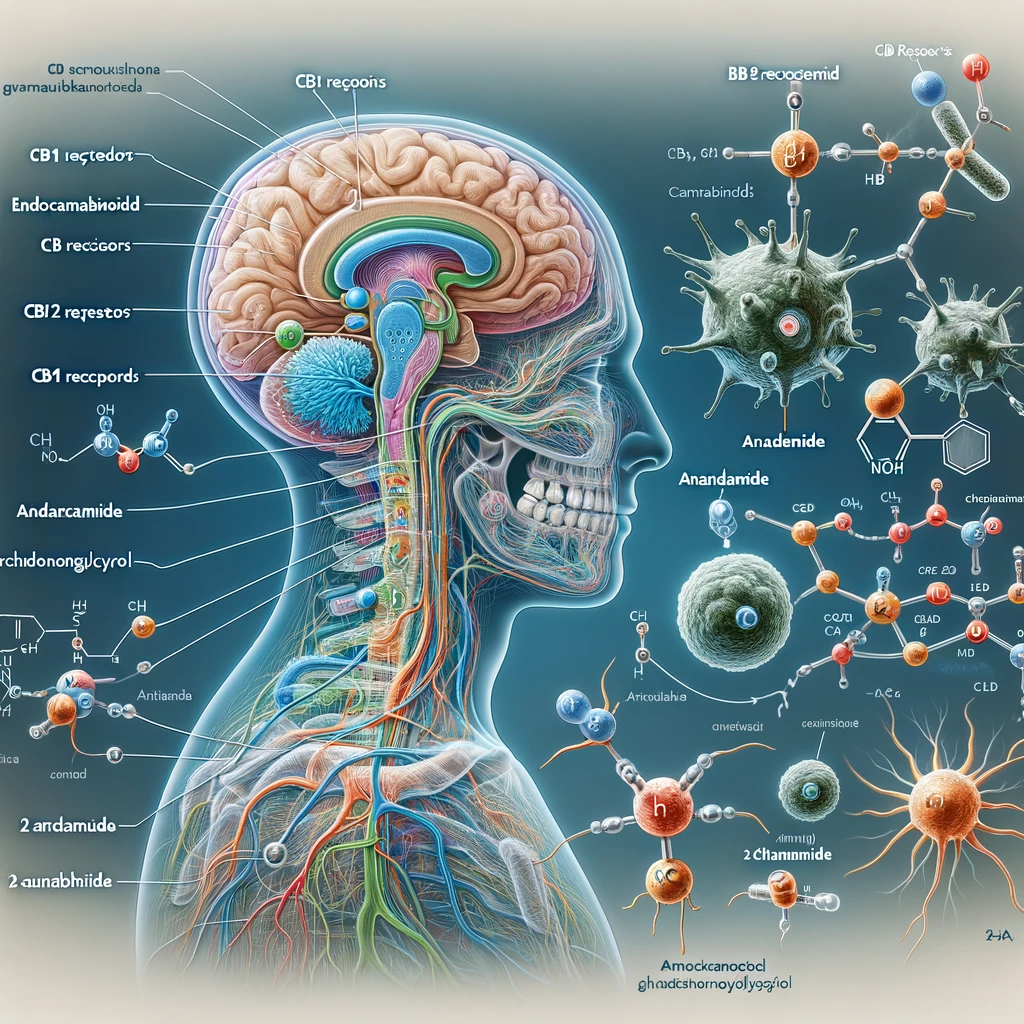The cannabis plant has been the alluring topic of interest for centuries encapsulated by both controversy and wonder. It has variable uses from medicinal, to recreational purposes as people continue to discover the benefits or disadvantage from using it. At the core of the understanding of how cannabis works in the human body lies the endocannabinoid system (ECS), a very intricate and ornate network of a sequence of biochemical interactions, designed to assist in the maintenance of our body’s homeostasis.
The endocannabinoid system consists of endocannabinoids, receptors, as well as enzymes that break down these cannabinoids. It is found throughout the body, but especially in organs, brain, glands, connective tissues and immune cells. It intervenes to many physiological processes as mood, appetite, pain-sensation and also memory. Its main job is to assist in the management of bodily homeostasis, balancing our internal environment against or as a response to changes occurring from the outside.
Cannabis holds more than a hundred cannabinoids but most research either focuses on or compares the two major chemicals—THC (tetrahydrocannabinol) and CBD (cannabidiol). THC is known to be the psychoactive part of the cannabis plant, producing the ‘high’ effect often associated with the use of cannabis. CBD, on the other side, does not cause this psychoactive impact and as such it has been generally noted for its potential therapeutic benefits.
Taken orally, these cannabinoids interact with the endocannabinoid system through binding or influencing its receptors called CB1 and CB2. Although the CB1 receptors are mostly situated within the brain and central nervous system, the CB2 type is more commonly distributed among peripheral organs and cells associated with the immune response. For example, THC directly binds with CB1 receptors altering the release of neurotransmitters in the brain to affect mood, awareness, and perception.
CBD on the other hand, despite it not strongly bonding with either CB1 or CB2 receptors, is known to affect the ECS in other ways. It is thought to block the breakdown of endocannabinoids, allowing them to have a greater effect on the body. Other than as a drug, CBD is also noted for other properties such as anti-inflammatory and analgesic properties other than its therapeutic use, thereby making it an additional subject of intense research for pain management and treatment of nervous disorders like epilepsy and anxiety.
The latest research to the ECS has been groundbreaking to disclose its possible applications as a target of the most novel therapeutic attempts. By manipulation of this system, scientists hoped treat more condition effectively. This includes chronic pain — a condition affecting millions globally and often poorly treated by current painkillers. There is also mounting evidence that the endocannabinoid system could be implicated in a whole range of conditions from neurodegenerative diseases to depression and anxiety disorders.
In spite of these advances, however, there is still much that is unknown regarding the ECS and how cannabis interacts with it. Perhaps one of the biggest roadblocks has been the fact that cannabis itself was illegal and its standing in the past constricted research. But, as more and more countries and states are moving towards the process of legalizing it, hope is pinned to a bright future that would allow the researchers to have knowledge about all aspects of marijuana and ECS.
In conclusion, the relationship of the cannabis to the endocannabinoid system attests in the complexities of human biology and great potentials held within the natural compounds for uses in medicine. The answers remain to be discovered as we continue investigating into the secrets of this incredible plant and their relations to our body, and only then will the medicines that we are already familiar with become more potent, while new cures will keep on emerging as we gain knowledge and understanding of health and disease processes.
Learn more about the endocannabinoid system here.

